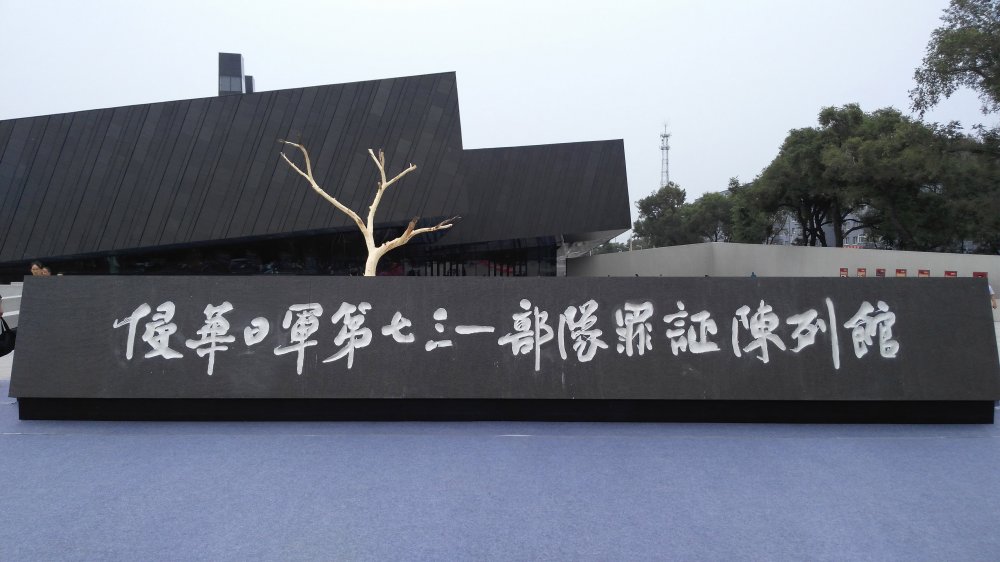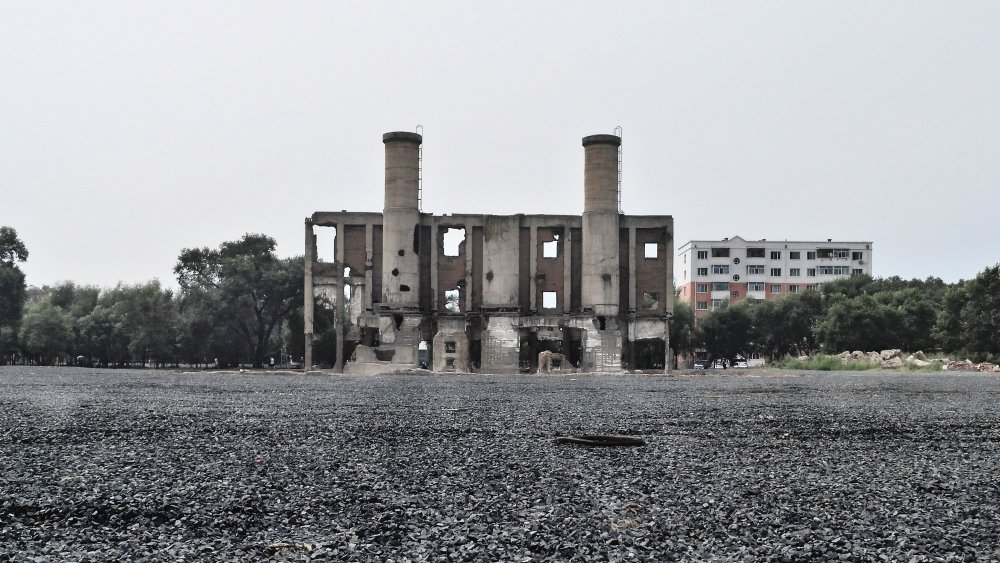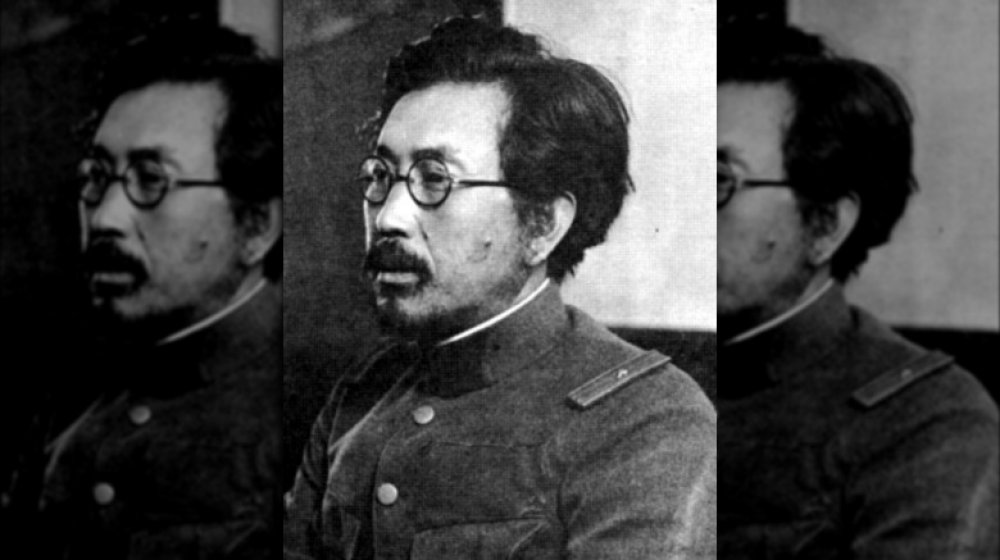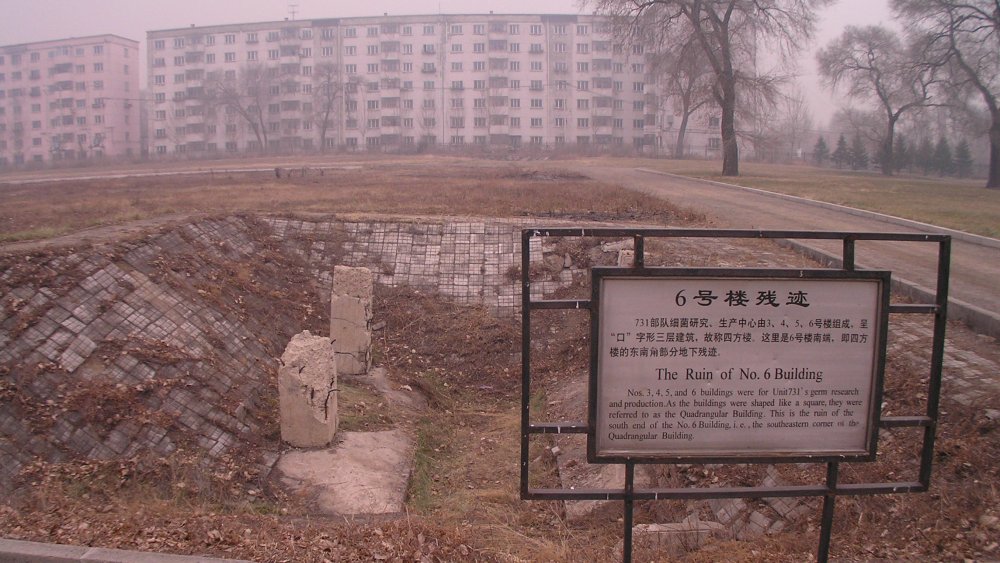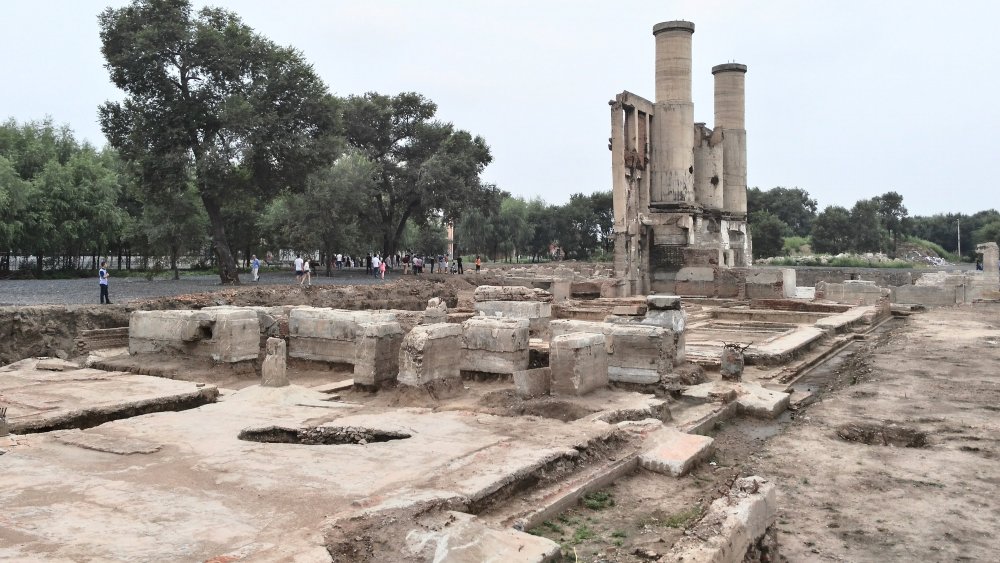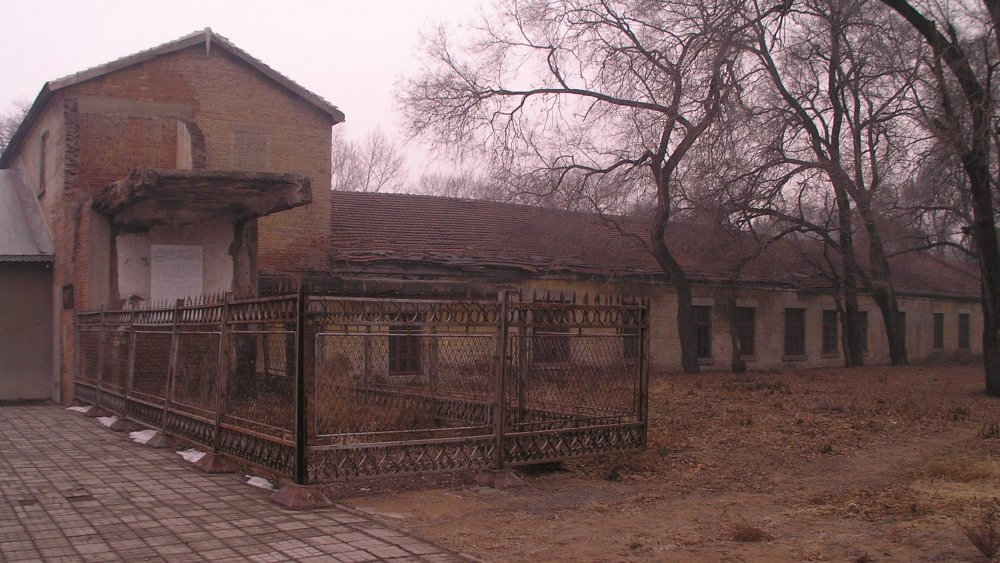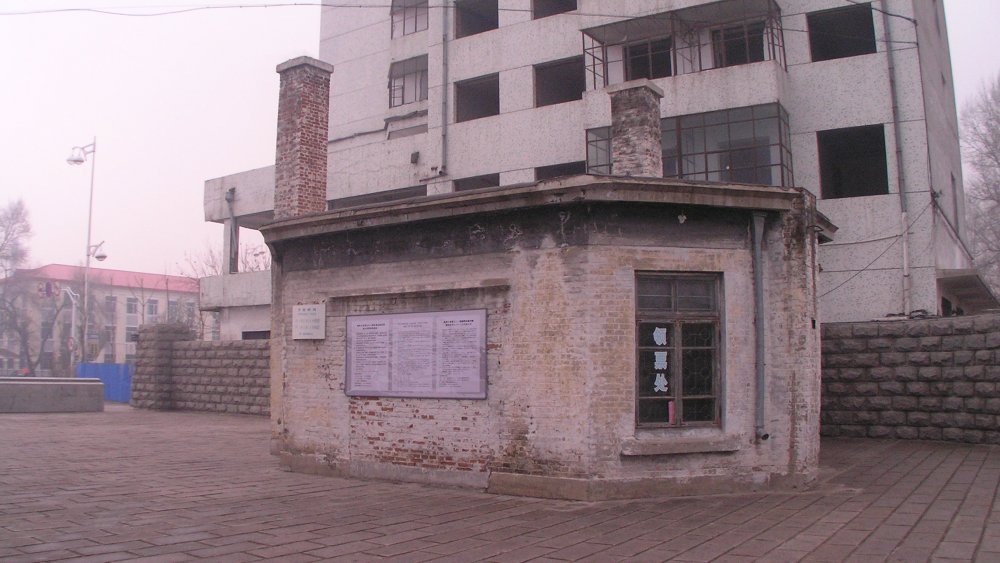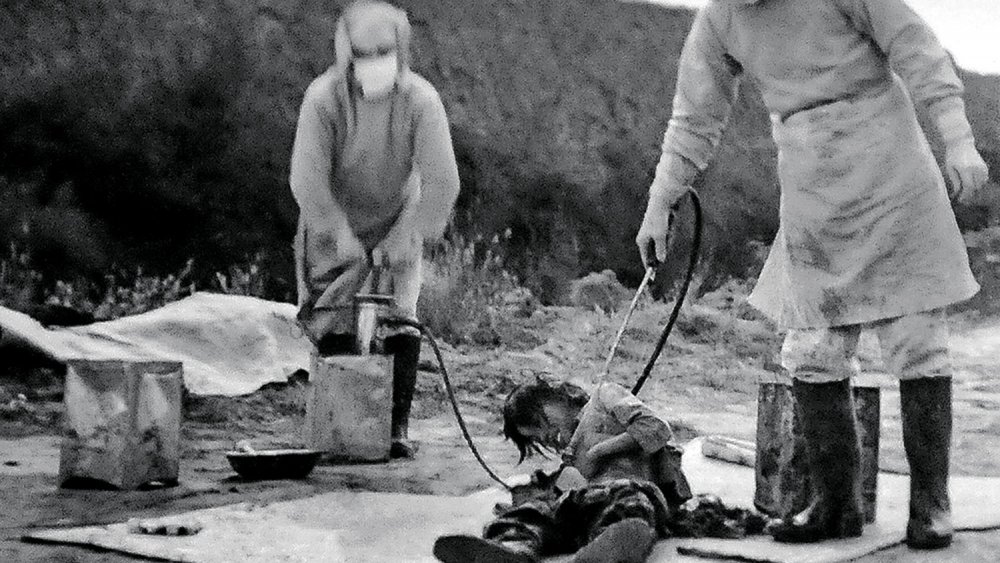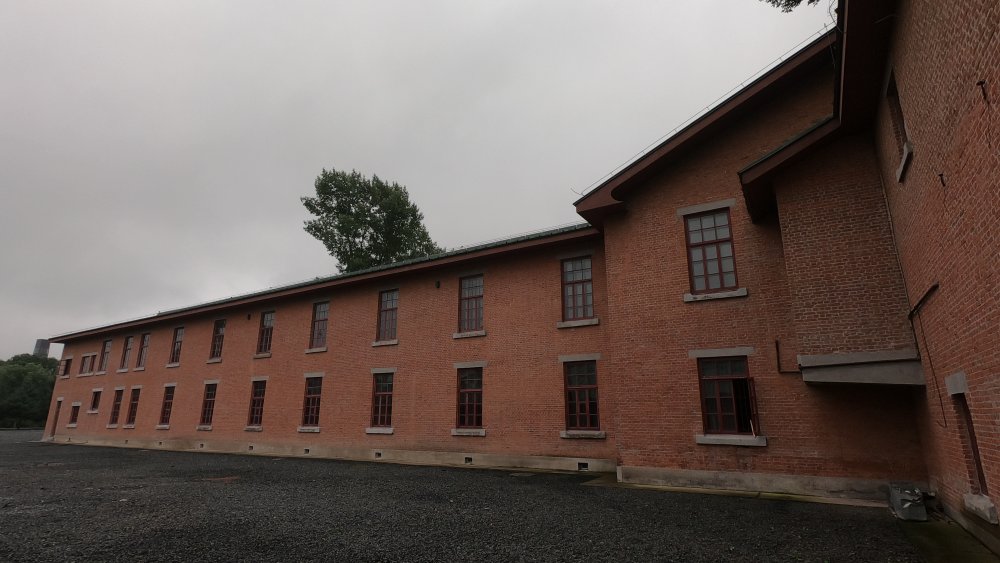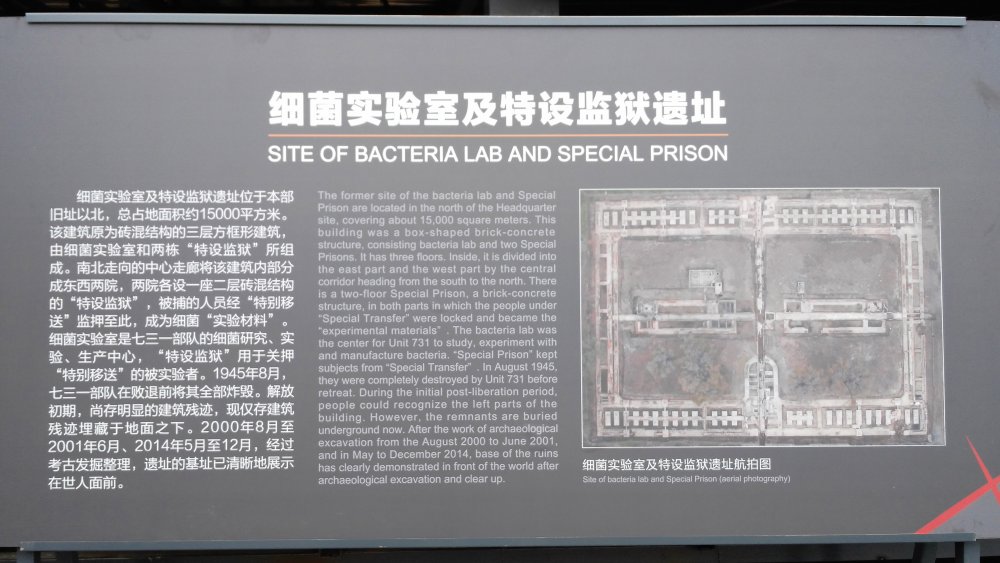Inside Japan's Horrifying WWII Biological Warfare Project
While most people are aware of the human experimentation carried out by the Nazis in World War II, the human experimentation done by the Japanese is less notorious but just as horrifying. During World War II, the Imperial Japanese Army undertook a variety of experiments on people, with biological warfare at the forefront of their endeavor. Imprisoned people were electrocuted, shot, frozen, and even put into pressure chambers. In addition, the Japanese experimented with a variety of diseases, including anthrax and bubonic plague, in the hopes of creating a devastating biological bomb.
One of the reasons why these atrocities are less well-known is because the United States government decided not to charge the Japanese doctors and researchers with war crimes in exchange for the information that they'd acquired. However, since the Soviet Union went ahead with trials and released all the testimonies, there are many firsthand accounts of what occurred.
Over the years, Japan has slowly admitted to some of the atrocities that occurred in the various biological warfare units, but many Japanese textbooks fail to include details of Unit 731. This is a look inside Japan's horrifying World War II biological warfare project.
What was Unit 731?
After the Japanese invaded the Chinese province of Manchuria in 1931, they quickly set up a puppet government, Manchukuo. According to The Harvard Gazette, while Manchukuo was advertised as a modern Pan-Asian state, the regime favored Japanese interests at its best and conducted horrifying human experimentation at its worst.
In addition to the experimentation in Manchukuo, the Japanese ran human experimentation units all over, such as Unit Ei 1644 in Nanjing and Unit 2646 in inner Mongolia. They spanned all the way to Singapore, as well, with Unit 9420. Unit 731 was just one out of several, but it became infamous once the extent and variety of its atrocities became known to the public. Despite the fact that the Japanese tried to destroy all evidence of these units in the final days of World War II, the Soviet army found shallow graves with thousands of dead Chinese and Mongolian people as they moved into Manchuria.
Unit 731 began operating in 1937 in Harbin, undisturbed by the Manchukuo puppet government. According to the Atomic Heritage Foundation, Unit 731 was originally started to promote public health and soon turned toward research that would be beneficial to Japanese soldiers, such as testing the ways that the human body fights against disease and withstands thirst and hunger. But pretty soon, it would become the stage for some of the most heinous experiments of World War II.
Who was Shirō Ishii?
Unit 731 was led by Shirō Ishii, a Japanese army medical doctor who'd been experimenting with the application of biological warfare. According to Factories of Death by Sheldon H. Harris, Ishii wrote to his superiors in Tokyo in 1931 informing them that "due to [their] great help we have already achieved a great deal in our bacteria research" and requested a transfer to Manchukuo to start developing new weapons.
Ishii transferred to Harbin in 1932, according to PBS. In order to ensure secrecy, Ishii relocated his group outside of the city to Zhong Ma Camp in Beiyinhe. However, after the prison camp suffered a jailbreak and an explosion in 1935, thought by many to be sabotage, Ishii moved his facility to Pingfang, and in 1936, construction began for the camp that became known as Unit 731.
Ishii told his doctors that while the research done at Unit 731 might go against their principles, "I beseech you to pursue this research, based on the dual thrill of 1), a scientist to exert efforts to probing the truth in natural science and research into, and discovery of, the unknown world and 2) as a military person, to successfully build a powerful military weapon against the enemy." In the end, the United States granted Ishii immunity in exchange for details of his experimentation. He died a free man in Tokyo in 1959.
Transfusion experiments
Ever since William Havey discovered the circulation of blood in 1628, people around the world have experimented with blood transfusions. According to Popular Science, there was even a time in the late 1800s when doctors in North America were experimenting with milk transfusions as a blood substitute.
Unit 731 followed this eccentric tradition with grotesque experiments of their own. According to the Eubios Journal of Asian and International Bioethics, doctors were trying to come up with emergency transfusion substitutes that could be given to wounded soldiers at the front. Some imprisoned people were injected with horse's blood, sheep's blood, or even blood drawn from the heart of a corpse.
Experiments with different blood groups were also performed, and extensive notes were taken on what occurs when various blood types are transfused into people with corresponding and non-corresponding blood types. It's possible that part of what we now know about hemolytic transfusion reactions came out of the Japanese experiments.
Scientists also tried out various methods of transporting blood, experimenting with transfused blood that had been kept in a thermos or had been frozen and thawed. Ringer's solution, which is an isotonic solution used to restore blood circulation, was also experimented with as a blood transfusion substitute, as was seawater.
Vivisections without anesthesia
Since they had told the local population that they were constructing a lumber mill, Ishii and his associates referred to their human subjects as "maruta" or "logs." Some of the most notorious experiments that Unit 731 performed were vivisections on maruta. According to The Guardian, after being deliberately infected with various diseases, imprisoned people were cut open without the use of anesthesia so that doctors could study how diseases affected various organs. Ishii and his colleagues thought that if they used anesthesia or dead patients, their results would be compromised.
In order to recreate the conditions of battlefield surgery, imprisoned people were shot so that doctors could practice extracting bullets, and often, veterinary surgeons were used for the dissections. According to The Baltimore Sun, the doctors also practiced amputations, with some reports alleging that they reattached limbs on the other side of the body.
In 1995, a doctor who'd performed some of the vivisections at Unit 731 agreed to speak to the Chicago Tribune on the condition of anonymity: "He made this unimaginable sound, he was screaming so horribly. But then finally he stopped. This was all in a day's work for the surgeons, but it really left an impression on me because it was my first time."
Frostbite experiments
Frostbite experiments were undertaken at Unit 731 in order to figure out the most effective methods for treating the condition. According to Factories of Death by Sheldon H. Harris, the Kwantung Army High Command reached out to Ishii requesting research on the effects of frostbite as they began anticipating war with the Soviet Union. Without delay, frostbite experiments quickly became commonplace.
These experiments were done every year during the coldest months as bodies were exposed to varying freezing temperatures and then underwent various attempts at defrosting. According to the Encyclopedia of Human Rights Vol. 1 by David P. Forsythe, imprisoned people would be tied up outside or sprayed with saltwater to induce frostbite. Sometimes, arms or legs would be dipped into water so that they'd freeze more quickly.
In the Materials on the Trial of Former Servicemen of the Japanese Army Charged with Manufacturing and Employing Bacteriological Weapons, testimonies from researchers revealed how the frostbite experiments were performed. After the imprisoned people had gotten frostbite, they were forced to put the frostbitten appendage in water that was 5°C, and the temperature of the water was gradually increased. One Japanese guard noted how they could tell that a limb had frozen once it sounded like wood when it was struck with a stick.
Experimenting with venereal diseases
Unit 731's microbiological research wasn't limited to biological warfare. Since syphilis afflicted many Japanese troops due to the prevalence of systematic rape and their abuse of "comfort women," researchers at Unit 731 wanted to better understand the affliction. In order to study the progression of the disease, imprisoned people at Unit 731 were purposefully infected with syphilis and gonorrhea to study the effects of venereal disease as it ravages the body.
According to Pacific Atrocities Education, imprisoned people were either forced to sexually engage with a previously infected prisoner or were given syphilis through injections, although the transmission rates with injections were unreliable and quickly discontinued. Guards would hold the imprisoned people at gunpoint until they were satisfied with the act that had occurred.
Once the infection was successfully transmitted, researchers observed the progression of the disease and noted the stages as it advanced and affected the body. Researchers tracked external signs, and it was especially in these instances that vivisections were conducted in order to investigate how syphilis affected the internal organs at various stages.
Forced pregnancies
In addition to forcing imprisoned people to rape one another, guards would frequently force themselves upon their prisoners as well, often simply as a way to kill time.
According to Pacific Atrocities Education, this frequently led to pregnancies, which were incorporated into the various human experiments done at Unit 731. The transmission of syphilis between mother and fetus was especially of interest for the researchers, and pregnant women were often infected with syphilis and cut open in order to see the effects on the fetus. The fetuses and babies were also used for various other experiments, like the research into frostbite.
Sometimes, people were forcibly impregnated so that various experiments could be conducted on pregnant people specifically. After the vivisections were completed, the bodies were burned so as to leave no evidence, though photographs of the experiments survive. No one knows how many people were "born" into Unit 731, but according to The New York Times, there were no survivors in the end.
Burgeoning biological warfare
Unit 731 was just one of many Japanese units concerned with biological warfare during World War II. While they occupied themselves with a variety of human experimentation, the main goal of the units was developing biological weapons. Unit Ei 1644 in Nanjing was another major biological warfare research center that studied a multitude of diseases and poisons.
According to The Guardian, Unit 731 cultivated, among others, cholera, plague, typhoid, and anthrax. To test their methods, Japanese planes would fly over Chinese villages and drop rice, cotton, or wheat sown with plague-infected fleas. CIA documents record one such incident occurring on October 27, 1940, when Japanese planes scattered wheat grains over Ningbo. On October 29, there was an outbreak of bubonic plague in the village, and within two days, 26 people had died. Tests were also done with anthrax bombs, though people often died from wounds inflicted by the bombs rather than via infection.
Testimonies from Materials on the Trial of Former Servicemen of the Japanese Army Charged with Manufacturing and Employing Bacteriological Weapons reveal that the various units were making at least 100 kilograms of anthrax, plague, typhoid, cholera each per month. In this case, that measure refers to the weight of the thick bacterial mass that was taken from the surface of the hard culture. While the amounts that they were producing weren't enough to launch a full-fledged biological attack, in 1941, efforts were ramped up to increase the mass production of bacteria.
Operation PX
One of the most ambitious projects of Unit 731 was Operation PX, also known as Operation Cherry Blossoms At Night. After having tested out dropping plague-infected fleas at Ningbo and Changde, the Japanese government hoped to expand their efforts onto the shores of the United States. This wasn't the first attempt by the Japanese to attack U.S. soil. According to Wired, the Japanese developed thousands of balloon bombs, one of which successfully drifted into Oregon and killed six people on May 5, 1945. But the logistics of biological warfare were considerably more overwhelming.
Developed by Ishii and approved by the Imperial Japanese government on March 26, 1945, Operation PX entailed dropping cargo filled with plague-infected fleas over Southern California. Fleas would infect rats, which would then infect food supplies and spread the infections to people.
According to The Japan Times, the Imperial Japanese government planned to drop the cargo on San Diego, but after the United States bombed Hiroshima and Nagasaki, leading to Japan's surrender, the plan simply never came to fruition. The timing was terrifyingly close, though. Operation Cherry Blossoms was to be executed on September 22, and the Japanese had surrendered just weeks earlier.
Unit 731 was swept under the rug by the United States
When Japan's defeat was imminent, orders were quickly given to destroy all the biological warfare facilities. Despite these efforts, floods of accusations and allegations of war crimes followed Japan's surrender. Ishii was repeatedly named, and eventually, he was tracked down at his home village in mid-January 1946. However, he wasn't arrested. Instead, the U.S. government sent Arvo Thompson to Tokyo to question Ishii. Thompson and others interrogated Ishii for seven weeks, during which time Ishii portrayed his biological warfare research as a small-scale operation.
According to Factories of Death by Sheldon H. Harris, the United States began their own biological weapons research not in response to Japan's research but out of fear of potential German research. While it is now known that Hitler prohibited the use of biological warfare, the United States wanted to be ready. But by 1942, at least one American medical journal had published a report about Japanese biological warfare in China.
Despite the fact that there was a great deal of evidence and an acknowledgement that the Japanese experiments were similar to those that the Germans were tried for, all prosecutions against Ishii and his associates were dropped. According to the Cambridge Quarterly of Healthcare Ethics, the United States' task force concluded that "the value to the U.S. of Japanese [biological warfare] data is of such importance to national security as to far outweigh the value accruing from 'war crimes' prosecution."
The Soviet Union shows the world a trial
After the United States decided not to pursue charges of war crimes against the Japanese researchers, the Soviet Union put on trials of their own. While the trials were derided by the United States as communist propaganda, they were able to establish beyond a reasonable doubt that the Japanese army had worked extensively with biological warfare and had conducted horrifying experiments on human beings. According to "Soviet War Crimes Policy in the Far East" by Valentyna Polunina, the Soviet Union might have belatedly decided to hold the trials once they realized that the U.S. wasn't going to share the information it had received from Ishii.
According to The Japan Times, while Soviet officials had been debating on what to do with Japanese prisoners of war, the United States secretly granted immunity to the researchers of Unit 731, infuriating the Soviet Union and inspiring them to hold trials of their own. The Khabarovsk War Crime Trials began on December 25, 1949, and lasted five days as they were pushed through Stalin's courts. In 1950, the Soviet Union published Materials on the Trial of Former Servicemen of the Japanese Army Charged with Manufacturing and Employing Bacteriological Weapons, which offered, in English, documents and testimony from the investigation.
Despite the show of the trials, though, it's likely that the Soviets also made a deal with the Japanese in exchange for information. While most Unit 731 researchers received 20 to 25 years, many were freed and quietly returned to Japan by 1956.
Aftermath and official government response
As knowledge of the biological warfare projects faded from memory, Japan refused to acknowledge the allegations of inhumane experimentation until 1984. Japanese textbooks mentioned Unit 731 briefly, but in 1997, a court ruled for the mentions to be deleted, claiming that "no reliable academic study, paper or publication is available for reference...therefore it was too early to address this issue in a textbook." Even when local governments held exhibitions about Unit 731, the national government continued to deny its existence. According to The Guardian, while Japan reluctantly admitted in the 1990s that Unit 731 had existed, they continued to refuse to discuss anything that had taken place in the camp.
According to The Japan Times, it wasn't until 2002 that the Tokyo District Court acknowledged Japan's use of biological warfare against China during World War II. Lawsuits had been filed in 1997 and 1998, demanding damages and an apology from the Japanese government for their role in biological warfare. However, while the court acknowledged that inhumane biological attacks had been carried out, Judge Koji Iwata rejected the plea for damages, stating that there was no precedent under international law for war damages being rewarded to victims.
In 2018, the Japanese government released the names of the thousands of people who had worked at Unit 731, the first time that an official document revealing the names of the researchers was ever disclosed.
